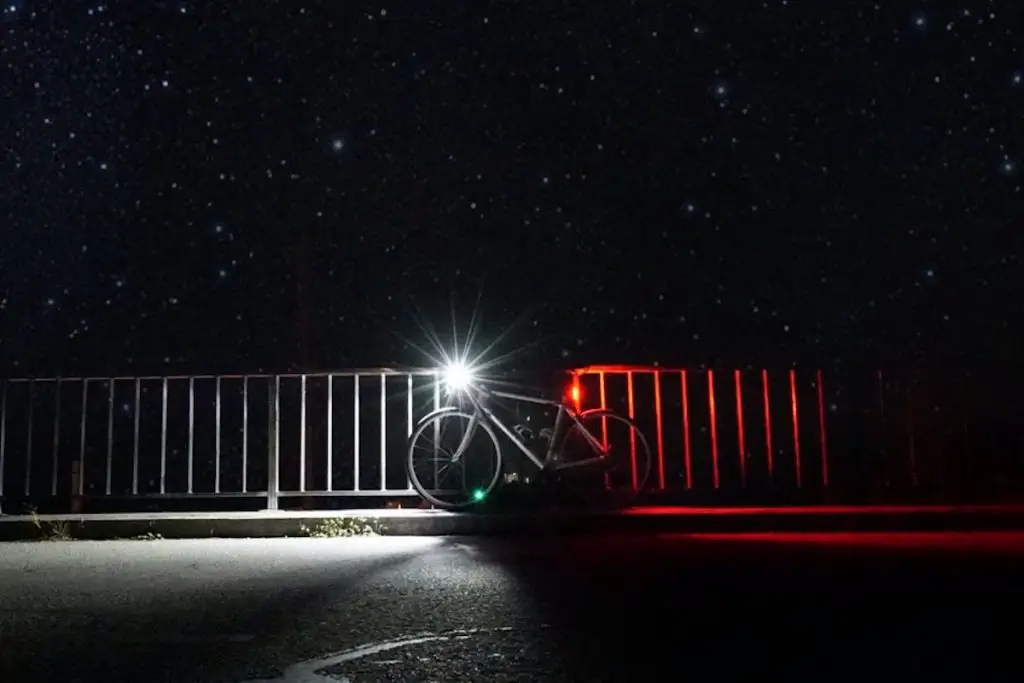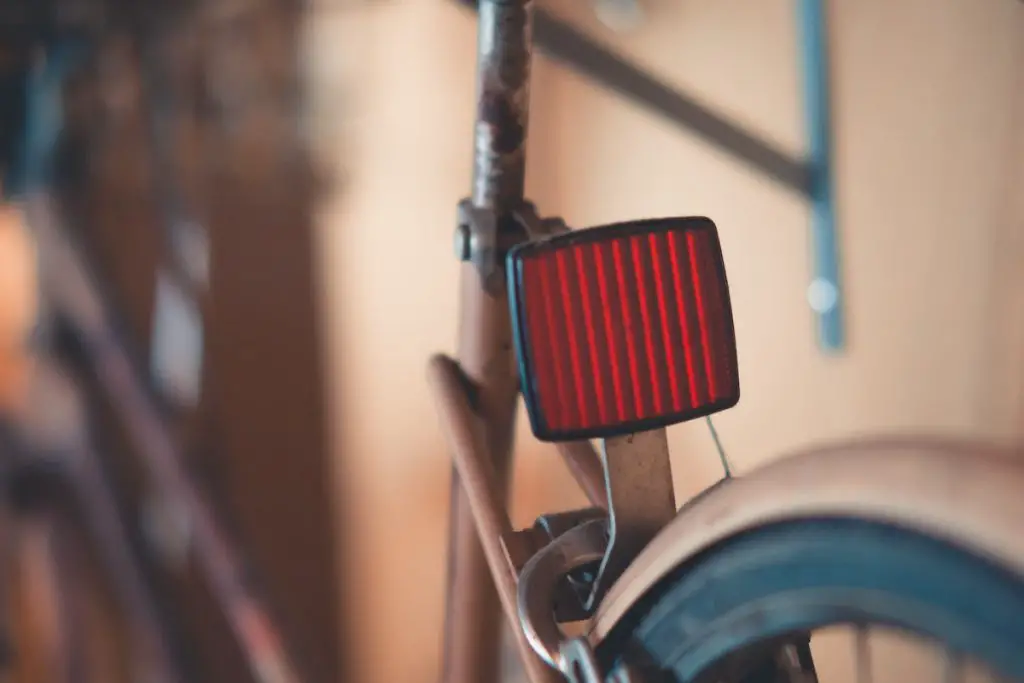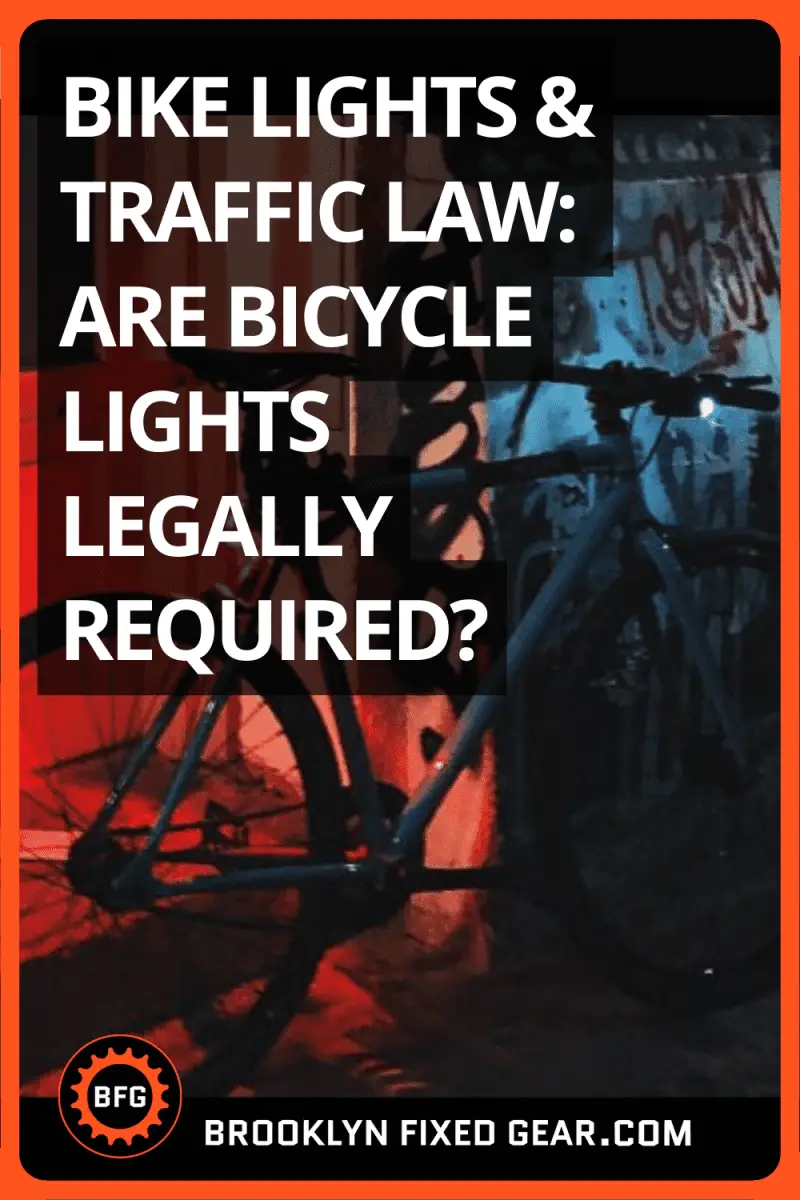Bicycle lights are an excellent way to ensure your safety while cycling at night. But are they required by law?
Bicycle lights are required by law in most jurisdictions. This involves riding both during the day and at night. Some reasons for this include improving the visibility of you and other riders at night and lowering the danger of accidents.
In this article, you will learn what bicycle lights and reflectors are and whether you need them legally on your bike to stay on the right side of the law.
Editor’s note: This article was updated on June 29, 2022, to include additional information about bike lights and the law.
Before learning about whether bike lights are required by law, let’s first understand what bicycle lights are.
What are bicycle lights?
Bike lights are small, compact lights that are specifically made to be mounted on your bike. They can help you be noticed by traffic and see where you’re going on the road, route, or trail when riding in low light or after dark. Front bike lights are white, just like car headlights.

Rear bike lights, often known as bike tail lights, are red in color and aid with visibility from behind. Both are normally powered by batteries that may be replaced or recharged. Below are some of the most popular bicycle lights on the market.
[azonpress template=”grid” asin=”B08QVGJFLM,B014QEWX2I,B01NAGIHJB”]
What kind of light do you need for your bike?
The kind of light you need for your bike varies from state to state, but here is some information from Florida. The front of the bicycle should have a light that emits a white light visible from at least 500 feet away. The rear of the bicycle must also have a red reflector. The reflector must also emit visible red light at least 600 feet away.
How many lumens do you need to cycle at night?
A typical trail rider will be comfortable with a minimum of 200 lumens; optimal is 250-400 lumens. Some riders can ride fast offroad at night, but anything above 400 lumens not only does not help us go faster but also consumes more battery life.
State Bicycle Co. Black Label 6061

State Bicycle Co. Black Label 6061
What are reflectors?
A bicycle reflector is a basic, prism-based safety device invented in Finland in the 1960s. It is commonly mounted to the back, front, pedal, or wheel of a bike and improves visibility in low-light riding settings. When light contacts the back of a prism or bead-coated reflector, it is redirected back in the same direction by tiny right-angle mirrors.
As a result, the reflector is only visible when the observer emits light (e.g., the driver of a car with the headlights on). While bike reflectors can be quite visible under certain conditions, they are often insufficient as visibility aids for night riding.
There must be some form of the back reflector, but you can also put reflectors on the pedals, side of the bike, and even the front (front reflectors must be white).
Do you need to have lights on your bike?
While thinking about your bike’s lights and reflectors may not be glamorous, the law in most states requires a front light and a rear reflector when riding in any low-light conditions, including nighttime, bad weather, dusk, and dawn. It is also prudent to prevent bicycle accidents.

What is active and passive lighting?
Bicycle lighting is split into two types: active lighting and passive lighting. Active lighting is lighting that must be turned on in some way. They can be powered by electricity. Bikes do not typically come equipped with these lights, so you must purchase your own. It is entirely up to you how many types of lights you buy. However, the lights must be visible from at least five to six hundred feet (depending on the state) from the front of the bike.
Reflectors are considered passive lighting because you do not act upon them for them to work. As a result, reflectors are regarded as “back-ups” to active lighting—they are there if your illumination goes out without you realizing it. Still, they cannot be relied on for complete visibility. Therefore, when riding a bike in low-light situations, like a half hour before dusk or up to a half hour after dawn, you should always have lights on your bike.
Can you use flashing or strobing lights on a bike?
You may be able to use flashing lights depending on your state, whether the bike is deemed a vehicle, and whether or not cars can have flashing lights.
In Washington, for example, flashing lights are prohibited on all vehicles except school buses, tow trucks, and emergency vehicles; bicycles are also considered vehicles. As a result, in Washington, you are not permitted to use flashing or strobe lights on your bicycle. Check with your state to see if a bike is classified as a vehicle and what types of vehicles can have flashing lights.
What happens if you are found cycling without lights or reflectors?

If you are caught riding without lights and reflectors in low-light/limited visibility or at night, the penalties vary by state, but they are usually traffic tickets with fines of up to a couple of hundred dollars. Some areas state that you can attend traffic school instead of paying the fee.
Another consequence that many individuals do not consider when riding without the right equipment: If you are in a collision with another driver and do not have your lights on, the insurance company of the other driver may blame you for the accident so that the company does not have to pay out. This means you could lose a settlement even though the other person was plainly at fault.
And, of course, if you’re not visible, you’re more likely to be involved in an accident and wounded, which is the worst thing of all.
If you want even more tips, watch this video called A Guide To Bike Lights | How To Choose Lights For Road Cycling from the Global Cycling Network YouTube Channel.
Frequently asked questions (FAQ)
Do you still have questions? Below are some of the most commonly asked questions about bike lights and the law.
Do you need a front bike light? at night
Yes. When riding at night, you should always have at least two lights on your bike: a front-facing light to illuminate the road ahead and a rear-facing taillight so drivers behind you can see you. Your front light should be white, strong enough to see any approaching obstructions, and set to a solid beam.
Riding your bike at night without sufficient lighting is never safe. When dealing with traffic while riding on the road, visibility is your top priority.
Are you required to have rear lights on your bike?
Yes. In most states, you need to have a read light and reflectors. Some rear lights even have a light and a reflector built into a single, removable piece, so you don’t need a light and a reflector separately.
What type of lights are required on a bicycle?
Cyclists must follow specific equipment regulations when riding on the road. Between dusk and sunrise, or whenever the weather requires it, they must use a white light on the front of the bike and both a red reflector and a red light in the rear.
The front of the bicycle should have a light that emits a white light visible from at least 500 feet away. The rear of the bicycle must also have a red reflector. The reflector must also emit visible red light at least 600 feet away.
The optimal is 250-400 lumens. Some riders can ride fast offroad at night, but anything above 400 lumens not only does not help us go faster but also consumes more battery life.
Which is better: front or rear lights?
While both front and rear bicycle lights can be useful in different ways, the rear light is likely to provide a broader range of visibility because the light shines downwards towards the ground, making it easier for motorists to see you at night or when there are a lot of shadows on the road. Front bike lights perform great during the day but may not be as apparent during the night.
What are the benefits of using bike lights?
The biggest benefit of bicycle lights is visibility. you want to be seen, so you don’t get hit by cars.
Should you use lights during the day?
It can feel like wasting battery, but most available research appears to imply that running lights during the day can minimize collisions.
Conclusion
We hope you found this blog post useful and that it helped you understand bike lights better. As you can see, they are an important component of biking and should not be overlooked. Always wear them when biking at night, and stay safe out there!
This article covered bicycle lights and reflectors and whether you need them legally on your bike. Here are some key takeaways:
Key takeaways
- Lighting equipment decreases the dangers of bicycling at night.
- Bicycle lights are not required federally in the United States, but all states have laws requiring you to have them on at night.
- Bikes must have front lighting that is visible from 500 feet away and is white.
- Bikes must also have at least one red reflector in the rear visible from 600 feet away when light shines on it.
- Bicyclists must usually follow traffic laws, like wearing a helmet or something to protect their eyes and paying attention to all road signs and signals.
- You can use many sorts of lights on your bicycle.
- Some jurisdictions require bicycles to wear luminous clothes or vests.
So, do you ride with both head and tail lights on your fixie? Did we cover everything you wanted to know? Let us know in the comments section below (we read and reply to every comment). If you found this article helpful, check out our full blog for more tips and tricks on fixed-gear and single-speed bikes. Thanks for reading, and stay fixed.
Helpful resources
- Articles about Fixed Gear and single-speed Cycling and Equipment
- The Role of Lights in Improving Biker Safety
- Fixed-gear bicycle – Wikipedia

















Do you use a light? You better! It’s a no brainer. I always use a light at night and you should too. Let me know what you think in the comments.